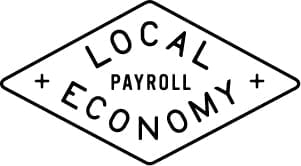401(k) Plans
In the first installment of this series, we discussed Traditional vs. Roth IRAs. In the second we talked about the differences between SEP and SIMPLE IRAs. In this third and final installment, I’ll discuss solo 401(k)’s and the more traditional 401(k) as retirement plan solutions for your small business.
Traditional 401(k)
A Traditional 401(k) plan offers higher limits on employee contributions than SEP or SIMPLE IRA plans, and allows employers to set a vesting schedule for employer contributions. However, the cost of administering the plans and annual reporting requirements can be significant.
Employee Contributions
A traditional 401(k) plan offers higher investment levels for participants than any of the IRA plans discussed in the previous installments. Participants can make pre-tax contributions of up to 100% of their earnings up to a maximum of $19,500 in 2021, with an additional catch-up contribution of $6,500 for participants 50 and over. The $19,500 and $6,500 catch-up limits are inclusive of any after-tax contributions to designated Roth accounts within the 401(k) plan.
Employer Contributions
Employers can make matching contributions to employees’ 401(k) accounts of up to 100% of the employees’ contribution amount if the plan documents so allow. In addition, employers can make elective contributions to employees accounts up to a maximum combined total for employee and employer contributions equaling the smaller of $58,000 or 100% of employee’s compensation in 2021, or $64,500 for employees over age 50.
Vesting
Employee contributions to their own 401(k) are immediately 100% vested, but employers have the option to set vesting schedules for the employer contributions to a traditional 401(k). Such a vesting schedule can be an incentive for employees to stay at the employer’s place of business. This is an important difference between traditional 401(k)s compared to SEP, SIMPLE, and Safe Harbor 401(k)s (discussed below) which require immediate vesting for employer contributions.
Employee Eligibility
Employees who are 21 years of age, have worked for the company for at least one year, and serve a minimum of 1,000 hours per year must be made eligible for a 401(k) plan. These are minimum requirements. Plans are allowed to be less restrictive.
Downsides
- Testing and Reporting: Traditional 401(k) plans require a significant amount of testing and reporting to ensure that the plan is non-discriminatory and not top-heavy. Such problems arise when the owners and the most highly compensated employees (“key employees”) own a large percentage of the value of the plan assets. Although the details for testing are beyond the scope of this paper, you should consider the cost and time involved in providing annual reporting for your plan. The following website has some good information on non-discrimination testing and top-heavy compliance:
https://www.guideline.com/blog/nondiscrimination-test-401k-compliance/
- Administration Costs: Because of all the testing and reporting requirements related to a Traditional 401(k), most companies have to hire a plan administrator to oversee the plan.
Safe Harbor 401(K)
A Safe Harbor 401(k) plan provides similar benefits to employees but requires certain contributions from employers in exchange for relaxed, fewer testing, and reporting requirements. Unlike Traditional 401(k) plans, immediate 100% vesting is required for employer contributions to the plan.
Employers have a choice in the type of matching contributions they must make:
- Safe Harbor Matching Contribution – 100% match on the first 3% of employee’s deferred compensation plus a 50% match on employee’s deferrals between 3% and 5% (4% total). (Applies only to employees who elect to participate in the plan.)
- Safe Harbor Non-elective Contribution – 3% (or more) of compensation, regardless of employee deferrals. (Applies to all eligible employees, regardless of whether or not they elect to participate in the plan.)
Solo 401(k)
A Solo 401(k) can only be offered to the owner(s) of the business and their spouse(s) if they work for the company. Right off the bat you probably assume that, if you have employees you can’t use a solo 401(k). That’s not entirely true. You could have employees, but the plan rules would have to be such that the employees don’t qualify to participate in the plan. For example, the rules could say that only full-time employees can participate in the plan, and your only non-owner employee is part-time. (Be careful. Full time for purposes of 401(k) testing is 1,000 hours annually, or an average of 19.23 hours per week.)
Assuming that you meet the owner-only criteria, the Solo 401(k) does have the benefit of limited discrimination testing, in comparison to regular 401(k). This is because there are no employees to discriminate against.
